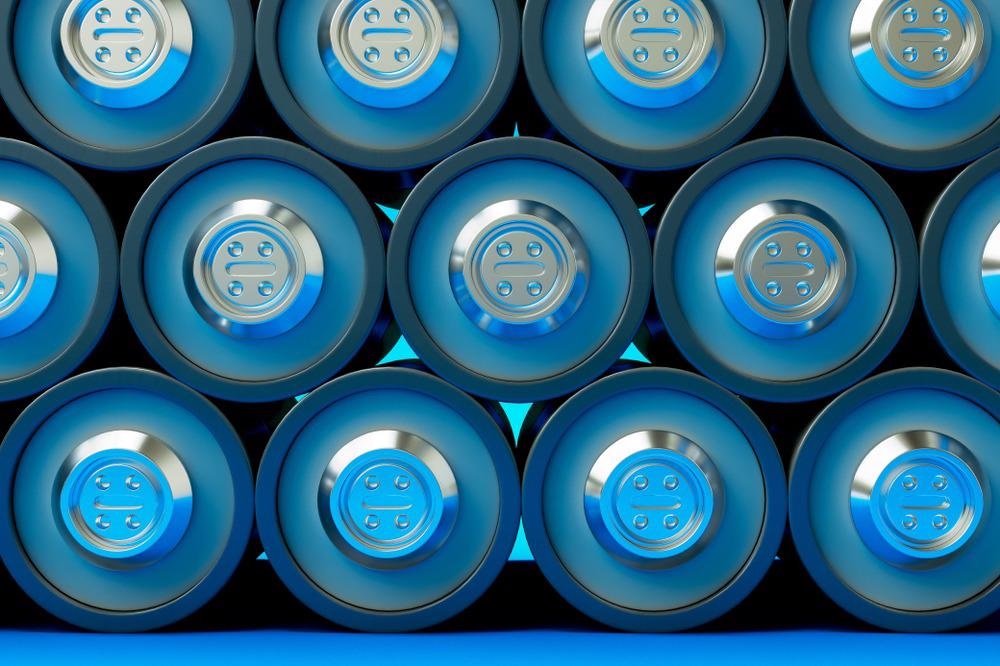In a recent study published in the Journal of Colloid and Interface Science, researchers analyzed for the first time the fast-charging behavior of micro lithium-ion batteries (LIBs) under ambient and high-temperature conditions.

Study: The fast-charging properties of micro lithium-ion batteries for smart devices. Image Credit: ArnyGFX/Shutterstock.com
In this case, the electrochemical test results for 60 mAh LiCoO2/graphite batteries under ambient temperature indicated that the charging rate above 4C (i.e., 4 A for 15 min) resulted in accelerated decay of battery capacity without any noticeable decrease in charging time. However, at a higher temperature of 65 ℃, the charging rate increased to 6C (i.e., 6 A for 10 min).
Fast-Charging and Micro-Sizing LIBs
Due to high energy and power densities, LIBs are going to stay as the highest preferred battery system for the next few years despite the scarcity of lithium (Li). High energy density means high storage capacity, and high-power density means a faster charging rate.
As per a recent report, US advanced battery Consortium (USABC) has a target to achieve a charge of 80% of the full capacity of a battery within 15 min for electric vehicles (EVs) by 2023. Micro-sized parallel LIB cells may offer a solution to achieve this high charging rate. However, their fast-charging properties under different temperature conditions are still an untouched research topic.
LIBs are prone to dendrite growth and short-circuit at high temperatures; also, there are several non-preferable battery and charging conditions that may be triggered due to micro-sizing LIB cells and lead to thermal runaway. A thermal runaway is a chain reaction in which a Li metal/ion comes in contact with atmospheric oxygen and surpasses a certain threshold energy level due to several triggering factors which results in LIBs discharging rapidly and catching fire. Moreover, fast charging causes Li plating, large heat generation, solid electrolyte interface (SEI) growth, and loss of active materials of the cathode.
About the Study
In this study, researchers fabricated a wireless headphone made up of 1254-type LiCoO2/graphite micro-LIB cells and studied its electrochemical performance at ambient and elevated temperatures. Four charging rates viz. 1C, 2C, 3C, 4C, and 6C, and three temperatures viz. ambient (i.e., 25 ℃), 45 ℃, and 65 ℃ temperature conditions were incorporated into the test.
Observations
For the first cycle and 60 mAh full capacity at ambient temperature conditions, the total charging capacities were 81.46%, 21.8%, and 9.25% under 1C, 4C, and 6C charging rates, respectively. The discharge profile was almost identical but, high current density resulted in increased polarization under limited mass transportation, which caused sluggish diffusion kinetics in graphite.
Charging up to 80% of the battery’s full capacity 1C, 2C, and 4C charge rates took 50, 30, and 18 min, respectively. Surprisingly, above the 4C charge rate, the charging duration did not decrease. The charging and discharging capacity decreased with the increasing charging rate. Additionally, faster-charging rates (i.e., at 6C) led to fast battery aging.
More from AZoM: The Use of AFM in Archaeology and Paleontology
The SEM images of the morphologies of LiCoO2 electrodes for 4C charging rates obtained after the fresh and fast charging cycles were similar without any noticeable cracks. At the 4C charging rate and under ambient temperature, the micro-LIBs exhibited excellent electrochemical performance than high energy density LIBs. Fast charging caused the formation of planar gliding on the surface of the LiCoO2 electrode and led to exfoliation of graphite layers and incrassation of SEI film on the lithium surface.
At elevated temperatures, the initial charge and discharge capacities for the 4C charging rate were 60, 66, and 65 mAh at 25, 45, and 65 ℃. The increase in charging and discharging capacity at 65 ℃ was associated with a decrease in polarization in the full batteries. However, for the same elevated temperature, the 6C charging rate resulted in the battery capacity decay.
From the EIS results, it is evident that the resistance of SEI film increased with an increase in temperature. LiF was the major constituent compound of the formed SEI film on the graphite, which increased with an increase in temperature.
Conclusions
To conclude, the researchers of this study fabricated micro-LIBs consisting of LiCoO2 as the cathode and graphite as the anode material and studied their electrochemical performances under ambient (25 ℃) and elevated temperatures (45 and 65 ℃). Under ambient temperature, 4C was the optimal charging rate with the shortest charging time of 18 min, whereas the charging time can further decrease (i.e., charging rate increased to 6C) only when the temper went up to 65 ℃.
However, this fast charging at elevated temperature resulted in battery decay; the graphite electrode exfoliated and LiF SEI incrassated on the cathode LiCoO2 electrode.
Disclaimer: The views expressed here are those of the author expressed in their private capacity and do not necessarily represent the views of AZoM.com Limited T/A AZoNetwork the owner and operator of this website. This disclaimer forms part of the Terms and conditions of use of this website.
Source:
Gao, X., Zhou, H., Li, S., Chang, S., Lai, Y., Zhang, Z., The fast-charging properties of micro lithium-ion batteries for smart devices, Journal of Colloid and Interface Science, 615, 2022, 141-150, 0021-9797, https://www.sciencedirect.com/science/article/pii/S0021979722001187?via%3Dihub